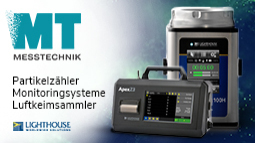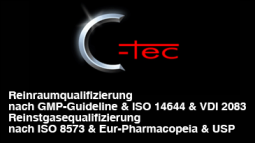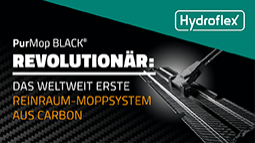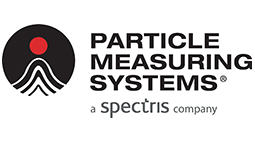Atmospheric pressure pure area, a draft directive
In the case of the production of smallest structures, e.g. in
production of microprocessors, or in the clinical range, e.g. in
operating rooms, consequence-fraught problems can arise as a result of
impurities in air. While handling problematic materials in research or
production it must be guaranteed that the environment is not exposed
to any loads. For this purpose in clinical and industriellen ranges
pure areas are used. With the examination of the hermeticness of pure
areas in the past it turned out that the space covering of all
measured areas is high-grade air permeable. After detailed search it
is to be stated that there are no loadable normative requirements to
the hermeticness of pure areas.Due to our knowledge of air flows and pressure loads on buildings we
have concern that because of these leakages in the confinement
surfaces hygenic standards in the hospital and laboratory range are
not fulfilled, and/or living structures uncontrolled into the
environment to arrive to be able. The determined serious lack of the
hermetic level would be to be gotten with the methods in the building
industry, usual after the state of the art, into the grasp. The
authors examined various operating rooms, isolating rooms, and
research areas, in which attempts with viruses and changed genes are
accomplished, as well as a manufacturing plant from the element
manufacturing. Pure areas are divided into different classes and are
characterised by the fact that on the one hand certain particle
numbers and sizes are not fallen below and on the other hand dangerous
materials into the environment to arrive. First is reached, by a
positive pressure of e.g..10 Pascal is produced and one of it goes out that "cleaned air" only
by the ventilation system into the area flows. If no critical
materials, e.g. changed genes or viruses, into which are to arrive to
environment, one produces a negative pressure of e.g. 10 Pascal.
Apparent one assumes these pressure ratios are stable and reliably is
sufficient around the desired bulkheading to the environment to reach.
Precarious it is however that in Germany with storms on pressures on
the fronts by 450 Pascal must be counted [ info. of the building
houses university Weimar ] and thus the protective system 10 Pascal is
ineffective, if the space covering exhibits air leakages outward. The
moreover one due to the large leakages highly dimensioned ventilation
rates of the room air-technical plants are needed. These produce
increased operating cost (energy and filter material) with appropriate
leakages in relation to areas with small adapted change of air rates.For these reasons we hold it for urgently necessary that requirements
are guaranteed to the tightness by pure areas and the associated
ventilation systems. In order to be able to give for the time up to
the verabschiedung of standards or guidelines the planner, component
manufacturer and implementing of pure areas assistance for the
adequate production of the hermetic covering and the ventilation to
the hand, the following requirements were arranged to the hermeticness
by pure areas conditions September 2007: Requirements of the
hermeticness set up by pure areas (draft directive) conditions
September 2007 of: young - gbw ltd.: Daniel young BlowerDoor GmbH:
Paul Simons, Stefanie Rolf Meier 1) in the context of planning is to
be defined for pure areas one air tightness level to plan and
graphically explain.A concept for the pressure maintenance to the adjacent ranges with
different operating conditions must be in writing laid down. At least
described operating conditions should be: A) Normal condition b) Pure
or disinfection condition C) power failure 2) in the reference to the
tightness requirements of the spacecomprehensive covering at least a
q50 must? 0,3 m³/m²h to be kept (see DIN 4108 part of 7). The q50? 0,3
m³/m²h following the passive building method, their limit value was
selected with a A/V relationship of 1 amounts to q50? 0,6 m³/m²h. For
pure areas this value should be intensified still times. Rate q50? 0,3
m³/m²h is already reached in housebuilding. 3) all construction unit
connecting joints in the air tightness level must exhibit a joint
passage coefficient smaller than 0.1 m3/mh(daPa2/3) [ see DIN 4108
part of 2: 2003-07). 4) single leakages may be large at the most 1
mm².5) construction unit joints are to be trained according to the state
of the art durably hermetically. [ see EnEV ] 6) all function joints
at windows and doors to correspond the DIN EN 12207 June 2000, class
4. 7) the permissible change of air rate n50 becomes from the q50? 0,3
m³/m²h and the permissible flow rate of the windows and doors
determines. 8) the examination of the air tightness level effected
following the DIN EN 13829 and should take place, as long as the
atmospheric pressure is accessible level. With the series of
measurements a test pressure must be started by 200 Pascal (* in the
above ground construction will according to DIN EN 13829 with a test
pressure by up to 100 Pascal, with a test pressure of 200 Pascal has
one would be measured a larger security for strong wind situations and
concerning the durability of the sealings as if only to 100 Pascal
measured.) The construction units are to be designed for a static load
of 450 Pascal according to a load per unit area of 0,45 kN/m².9) the ventilation system is examined according to DIN 24194 for
hermeticness of the channels and catch elements.









